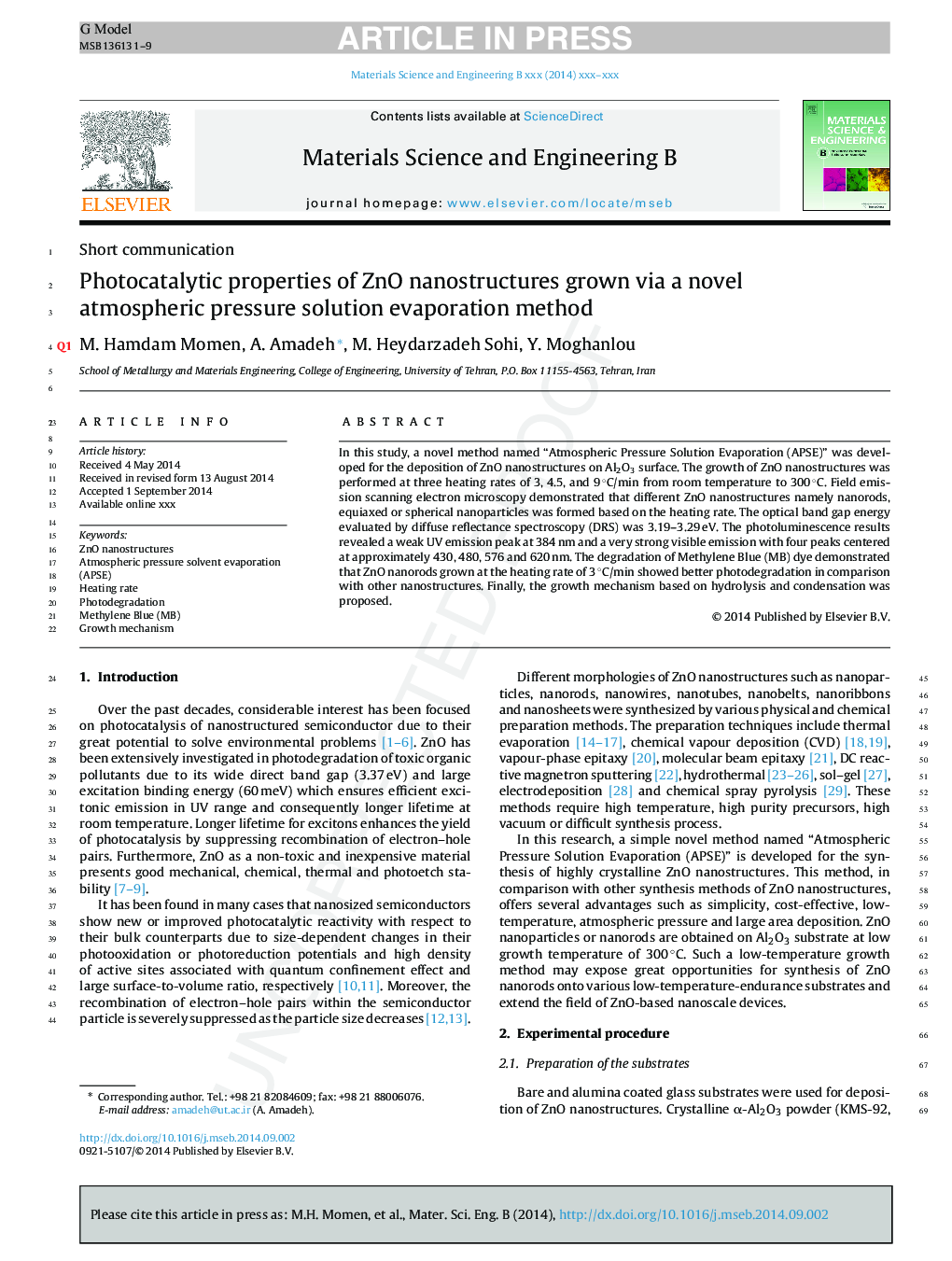| Article ID | Journal | Published Year | Pages | File Type |
|---|---|---|---|---|
| 7924361 | Materials Science and Engineering: B | 2014 | 9 Pages |
Abstract
In this study, a novel method named “Atmospheric Pressure Solution Evaporation (APSE)” was developed for the deposition of ZnO nanostructures on Al2O3 surface. The growth of ZnO nanostructures was performed at three heating rates of 3, 4.5, and 9 °C/min from room temperature to 300 °C. Field emission scanning electron microscopy demonstrated that different ZnO nanostructures namely nanorods, equiaxed or spherical nanoparticles was formed based on the heating rate. The optical band gap energy evaluated by diffuse reflectance spectroscopy (DRS) was 3.19-3.29 eV. The photoluminescence results revealed a weak UV emission peak at 384 nm and a very strong visible emission with four peaks centered at approximately 430, 480, 576 and 620 nm. The degradation of Methylene Blue (MB) dye demonstrated that ZnO nanorods grown at the heating rate of 3 °C/min showed better photodegradation in comparison with other nanostructures. Finally, the growth mechanism based on hydrolysis and condensation was proposed.
Related Topics
Physical Sciences and Engineering
Materials Science
Electronic, Optical and Magnetic Materials
Authors
M. Hamdam Momen, A. Amadeh, M. Heydarzadeh Sohi, Y. Moghanlou,
